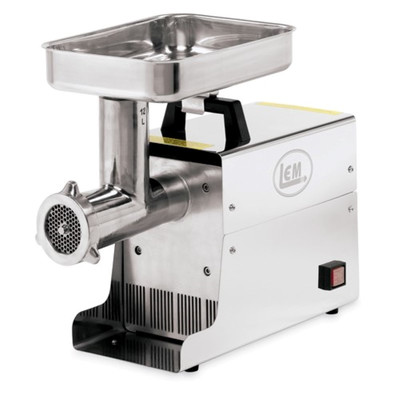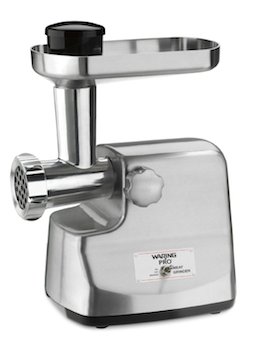Animal products are staples in the average American diet, but because of their vulnerability to bacteria, they must be handled and stored carefully. Meat, fish, and poultry must reach different internal temperatures before they are considered safe to eat. Each type of animal product can also be kept in the refrigerator uncooked for different amounts of time.
This topic can be confusing, but knowing the basics about meat safety will keep you healthy. We can fend off foodborne illnesses such as e.coli and salmonella, which are both caused by bacteria, by paying close attention to how we handle and store our food–especially animal products.
The Temperature Danger Zone
An essential part of all food safety is knowing about the temperature “danger zone.” The danger zone is a range of mild temperatures (between 40°F and 140°F) that food cannot be kept in for longer than 2 hours. Why the specific temperatures? Leaving raw food out at room temperature for too long can cause bacteria to grow to dangerous, illness-causing levels. Such bacteria include e.coli, staph, and salmonella.
Because bacteria cannot withstand extreme temperatures, they multiply rapidly within the temperature danger zone. Any temperature below 40°F or above 140°F is less likely to breed bacteria and therefore safe for storing food, while leaving food out at room temperature can cause bacteria to double in as little as 20 minutes.
Fridge Temperatures
Basically, you want to keep food out of this zone as much as possible for safe food preparation and storage. FYI, most refrigerators in the US default to somewhere around 40°F (usually between 32°F and 40°F, right above freezing). Generally, keeping your fridge in the middle of this range–or 35°F–is the way to go.
General Meat Safety Tips
Before we get into the specifics of how to store each type of meat, let’s go over a few general tips to keep in mind as you prepare your food. First, store raw meat, fish, and poultry in clean, sealed containers on the bottom shelf of the fridge. This placement prevents juices from the raw animal products from leaking onto any other food you have in your fridge (such as lettuce). In fact, such contamination of raw vegetables at restaurants can cause those outbreaks of e.coli you see on the news sometimes. Plus, you want to keep animal products at the coldest temperature possible without freezing them. Cold air sinks, so in most fridges–unless they contain an ice-making compartment at the top–the coldest part of the fridge will be the bottom.
Second, make sure to follow any storage instructions on the label and don’t eat meat after its use-by date. Refrigerate or freeze meat as soon as possible after buying it. Just like you wouldn’t leave milk in the trunk of your car after grocery shopping, never take your chances with uncooked meat. Try not to buy animal products at the store that will go bad on the same day or within the next few days–even if it’s on sale. If you do, either prepare it immediately or freeze it when you get home. Spoiled meat, poultry, and fish carry bacteria that can give you food poisoning.
Lastly, keep cooked meat separate from raw meat and all other ready-to-eat foods (such as bread, vegetables, or cheese) in general. Minimize cross-contamination in your kitchen by using separate cutting boards if you’re switching from cutting meat to chopping vegetables–or at least thoroughly cleaning the same cutting board. If you cook meat, always clean your cooking utensils before handling any other food. This applies to things like spatulas, knives, plates, and even sponges that have cleaned meat off a surface.
How Long You Can Store Meat Safely
So how long does each type of animal product last, in the fridge or in the freezer? We’ll break it down for you here.
-
In the fridge
- Uncooked poultry: 1-2 days
- Uncooked fish: 1-2 days
- Uncooked ground meat: 1-2 days
- Uncooked steaks or chops: 3-4 days
- Cooked poultry/meat/fish: 3-4 days
- Hot dogs and lunch meat: Up to 1 week (open package) or 2 weeks (closed package)
-
In the freezer
- Uncooked poultry: 9 months (pieces) to 1 year (whole)
- Uncooked ground beef: 3-4 months
- Uncooked steaks or chops: 4-12 months, depending on the product
- Uncooked fish: 6 months
- Cooked meat/poultry/fish: 2-6 months
- Hot dogs and lunch meat: 1-2 months
To ensure that you won’t accidentally cook spoiled raw meat, or eat already cooked meat that’s gone bad, always put a sticky note on the containers of animal products with the date you cooked or bought it. Whether you cooked some chicken breast two nights ago or bought raw fish fillets a week ago, you’ll want to know whether you can safely eat them after storing them in the fridge.
How to Freeze and Thaw Animal Products
Re-wrap meat, fish, and poultry products tightly in freezer paper or plastic freezer bags before storing them in the freezer. The key here is to protect these products from exposure to air. After wrapping your meat, add a layer of aluminum foil around it or seal it inside a zip-top freezer bag.
The best and safest way to thaw frozen meat requires a bit of planning. Place the frozen package in the refrigerator a couple nights before and let it thaw gradually. Small cuts will thaw this way in about 24 hours; larger ones can take a few days. In a pinch, small cuts can also be thawed in a bowl of lukewarm water under running water.
Pro-tip: If you forget to eat some meat and don’t want it stinking up your trash can for days, you can always throw it in a plastic bag and freeze it until trash day. Just don’t forget to throw it away eventually!
Does Meat Change Color When It Goes Bad?
When you’re examining a package of opened deli meat that’s been sitting in your fridge for who knows how long, you’ll probably examine the color of the meat first. So does a change in color actually indicate spoilage? According to the USDA, not necessarily. Color changes are normal for a fresh product stored correctly. However, spoiled food can change color, usually a fading or darkening.
If you’re not sure whether something is spoiled, smell and touch the food. Spoiled food will usually have an odor, be sticky, or slimy. A combination of these characteristics is a better indication that the food is actually spoiled. But remember–if you’re ever in doubt, throw it out. Never risk food poisoning thanks to spoiled meat.
If you ever notice white dried patches on meat that’s been kept in the freezer, your meat has freezer burn. When meat has been frozen for a long time without being sealed properly, freezer burn can happen. While you can still safely eat the food, the affected areas will be dry and tasteless. You can trim away these areas to improve the taste.
Safely Storing Meat
Like dairy products, meat must be handled with care and stored properly. Spoiled meat products can cause you to fall seriously ill. Luckily, avoiding cross-contamination and bacteria growth on meat products is simple if you’re aware of a few things. First, keep in mind the temperature danger zone. Meat products must always be stored at a temperature below 40°F or above 140°F, or they risk breeding bacteria. Also make sure to thoroughly clean your cooking utensils, from your cutting boards to your knives, to avoid contaminating non-meat products with bacteria from raw meat. When you’re not sure if a product is spoiled or not, throw it out to be on the safe side.


